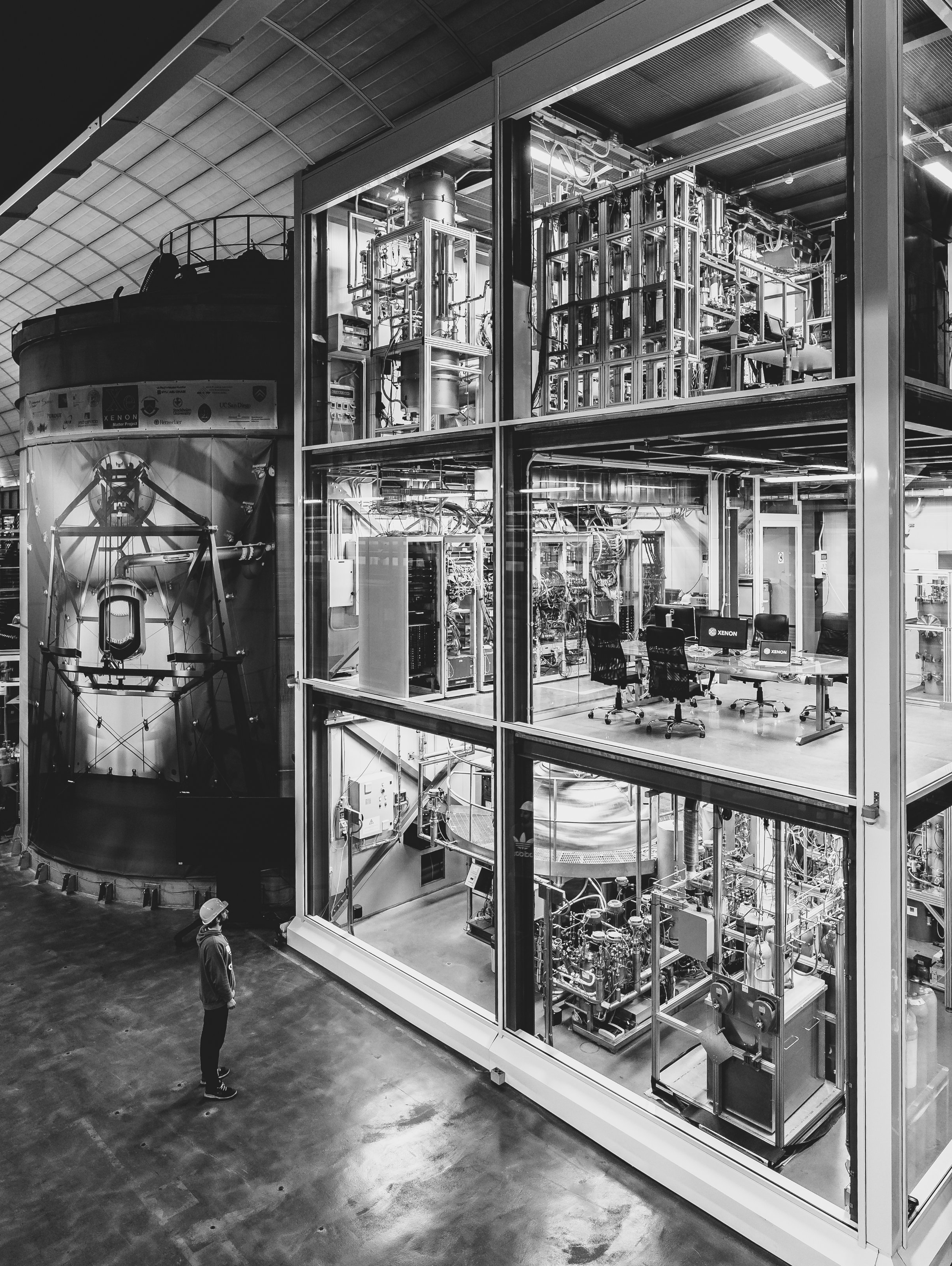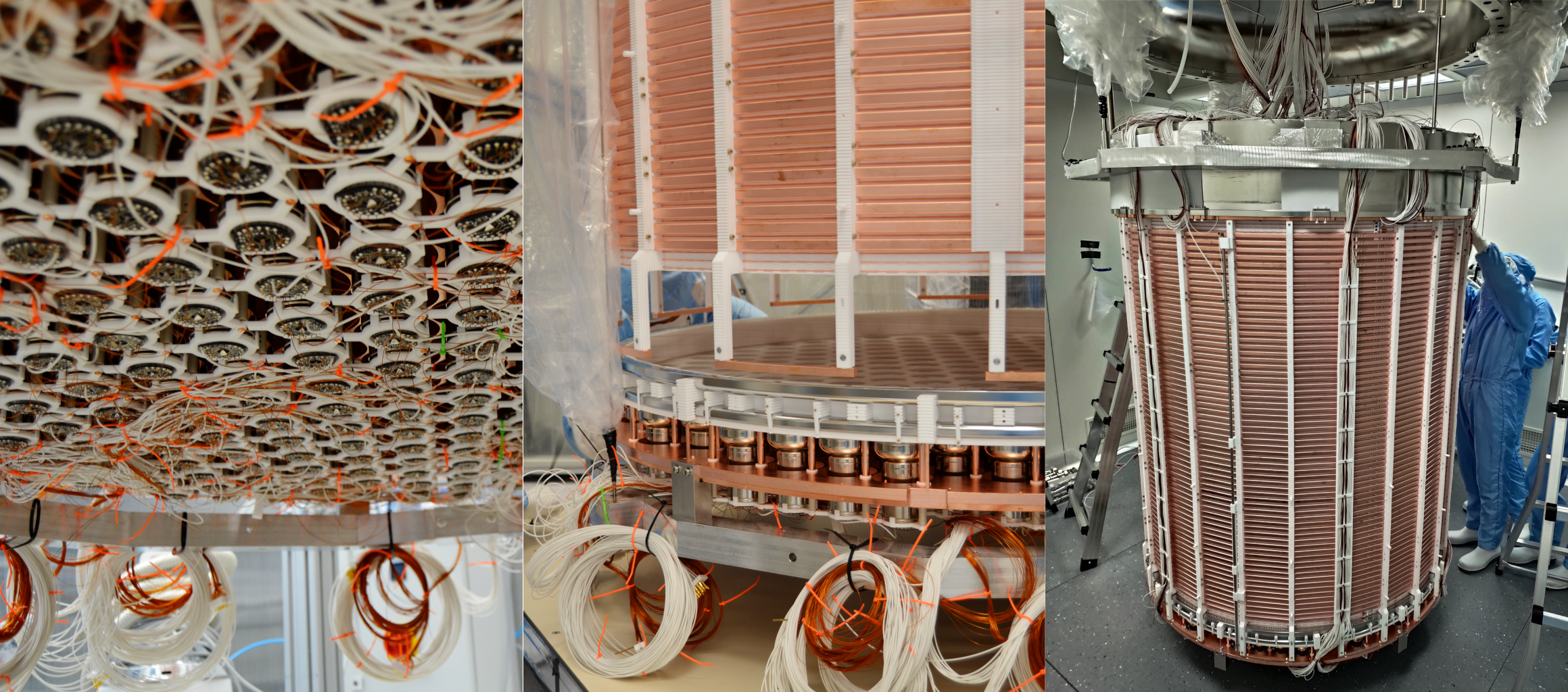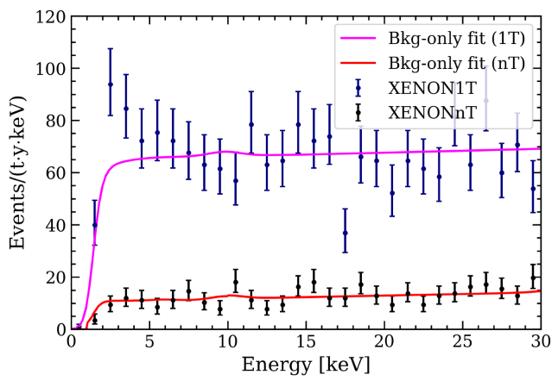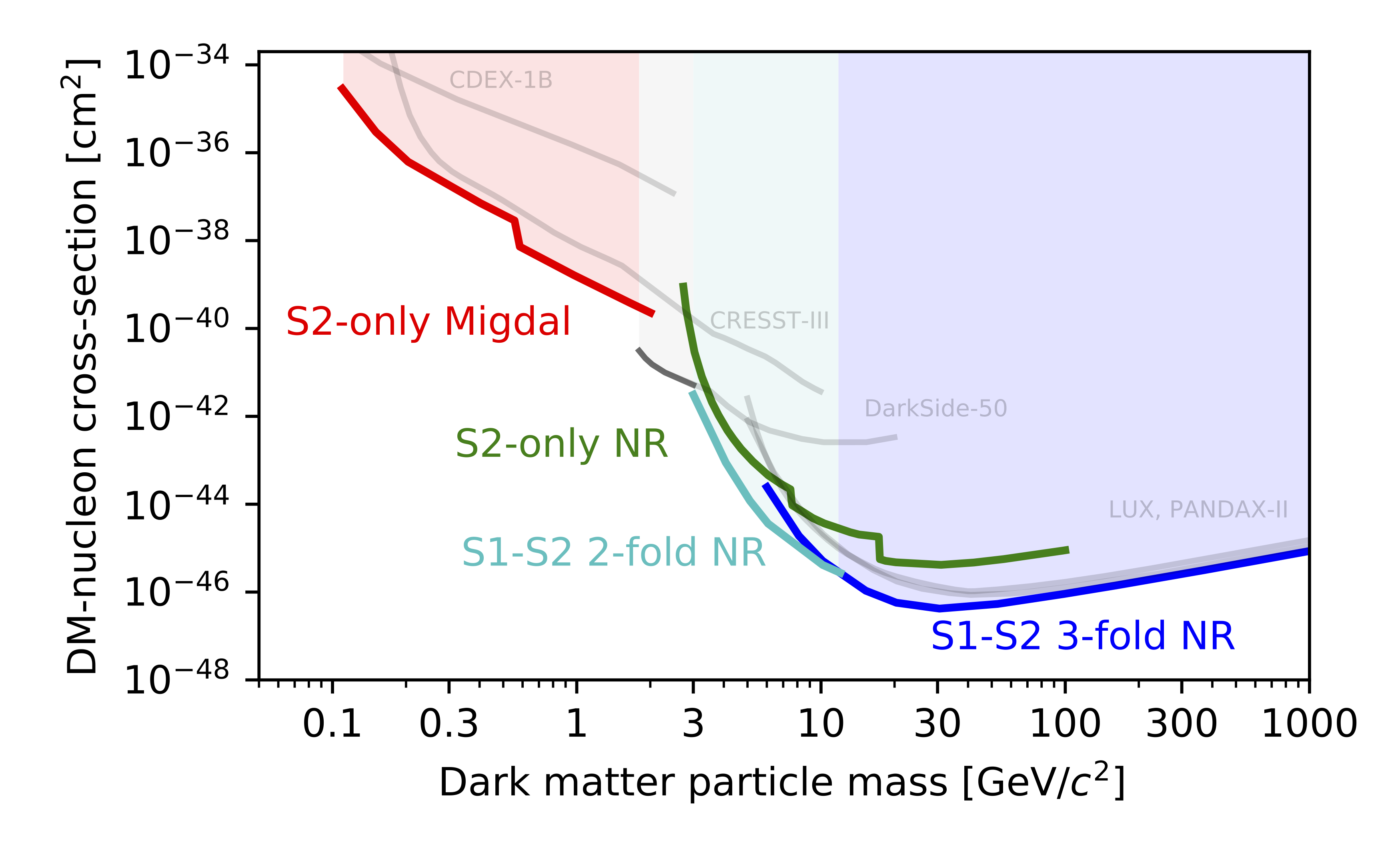XENON
Overview
XENON is a direct detection dark matter experiment that employs liquid xenon as a target medium. The goal is to detect the small charge and light signals that arise from a collision between a xenon nucleus and a dark matter particle in a liquid-gas time projection chamber. The prompt light signal (S1) is detected with two arrays of photomultiplier tubes. The ionization electrons are separated from the xenon ions and drifted upward in the liquid by an electric field until they are extracted at the liquid-gas interface with an even stronger field in the gas. Upon extraction, they generate secondary scintillation light (S2) that is proportional to the charge signal. This secondary signal -- delayed relative to the S1 by the time it takes the electrons to drift -- is observed with the same two photomultier arrays.

The TPC is designed to reconstruct the precise 3-dimensional position of the interaction site. These known positions then allow us to separate background events from our desired signal through a process known as fiducialization, the selection of an inner low-background region. Furthermore, the charge-to-light ratio, S2/S1, differs between electron recoils (background) and nuclear recoils (signal), thereby providing additional background discrimination.
The first phase -- XENON10 -- was successfully operated at the Gran Sasso Underground Laboratory (LNGS) until 2007, contributing the best limits on WIMP dark matter of its time. The second phase -- XENON100 -- achieved its projected sensitivity, surpassing XENON10, before it ceased operation in early 2016.
The third phase of the XENON dark matter search project -- XENON1T -- run from 2016 up to 2018 as the first tonne-scale LXe TPC for DM detection and yielded new best limits on several physics searches. The more recent detector of the XENON family -- XENONnT -- started operation in 2021 after a fast upgrade from XENON1T. With a larger target mass and a 5x reduction in backgrounds, it keeps pushing the edge of DM search forward in the years to come.
Within the XENON project, we co-lead several collaboration-wide working groups, focusing on the design of the time-projection chamber, the construction of the field cage, the cabling, the characterization of photosensors in liquid and gaseous xenon, the detector calibrations with LED light and radioactive sources, the radioactive screening of detector components, and the Monte Carlo simulations.


XENONnT
XENONnT is the successor to XENON1T and has been operational since 2021. The TPC field cage, PMT arrays, electrodes, and field shaping rings were assembled in an ultra-clean environment. Nearly 500 3-inch Hamamatsu R11410 photomultiplier tubes sit at the top and bottom of the chamber. At this scale, XENONnT holds 5.9 tonnes of liquid xenon in its active volume, three times as much XENON1T. This in turn allows us to use a larger fiducial volume and achieve a significantly lower radioactive background level. The TPC is also be guarded by the water Cherenkov muon and neutrino vetoes to tag events that would mimic dark matter signatures. Together, these features enhance our sensitivity to rare dark matter events alongside other physics searches.
One of the main objectives of XENONnT, after the enigmatic XENON1T low energy excess of electronic recoil events, was to probe this particular energy region. With an accumulated exposure of 1.16 tonne-years, the first results of XENONnT on the search for new physics in electronic recoil data observed no excess above background and set new and tighter limits on solar axions, an enhanced neutrino magnetic moment, and bosonic dark matter.

XENONnT's first science run has also yielded updated constraints on the nuclear recoil dark matter interaction parameters and demonstrated the detector's exceptional performance. In addition, the most important result so far was obtained with the combined exposure of the two first science runs of the experiment: XENONnT yielded the first indication of the low-energy nuclear recoils from solar neutrinos, particularly those involving the decay of boron-8 (Press Release).
With XENONnT continuing its operations, the collaboration aims to push the sensitivity of dark matter searches further, refining background suppression techniques and exploring additional rare physics processes. For more information, visit the XENON collaboration website.
XENON1T
XENON1T was one of the most ambitious dark matter projects. It was a dual-phase LXe TPC with a total mass of ~3 t and a fiducial mass of ~1 t. Two arrays of 3-inch Hamamatsu R11410 photomultiplier tubes were installed on the top and bottom of the TPC to detect the scintillation light from particle interactions within the xenon target. In order to reduce the ambient backgrounds to negligible levels, the XENON1T detector was housed inside a large water shield -- 10 meters in height and 9.6 meters in diameter -- and instrumented with 84 8-inch Hamamatsu R5912 PMTs, which provided an active Cerenkov veto and a shield against environmental radiation.

XENON1T commenced operations in late 2016 and provided its first, world-leading result. with a short 30-day run. Operations continued throughout 2018. We reached the lowest background ever achieved in a dual-phase TPC at the time: 82 events/tonne/year/keV. This ultra-low background granted us the highest degree of sensitivity to spin-independent WIMP-nucleon interactions. With an exposure of 1 tonne-year, we set the leading exclusion limits on the WIMP-nucleon scattering cross sections, with a minimum of 4.1×10-47 cm2 at a WIMP mass of 30 GeV/c2. This limit lied two orders of magnitude below that of XENON100 and a factor of 20 below the current best limits from the LUX and PandaX experiments.
XENON1T was decommissioned in the first quarter of 2019 to begin the construction phase of its successor, XENONnT, which further decreased the background to a record in a detector of its kind, enhancing the sensitivity to a plethora of rare-event searches.